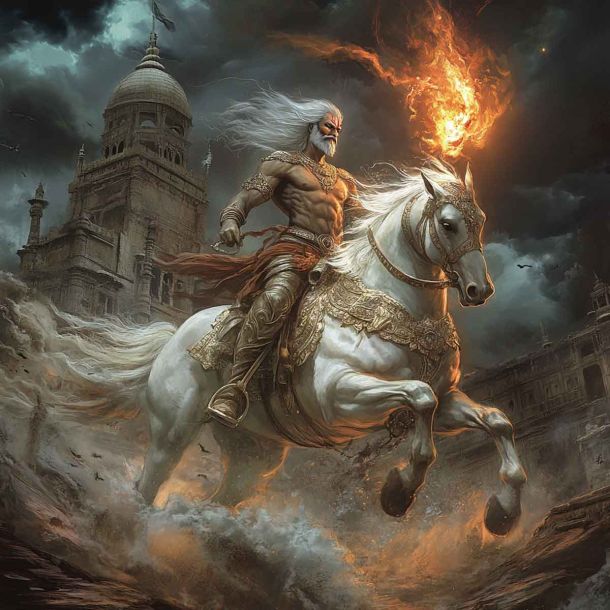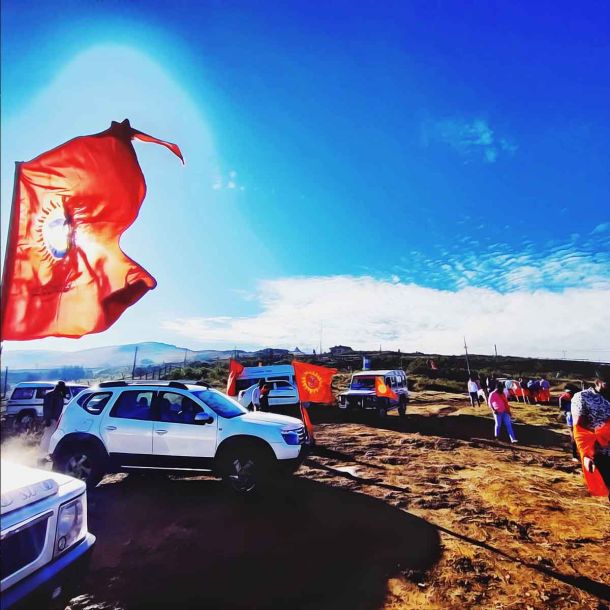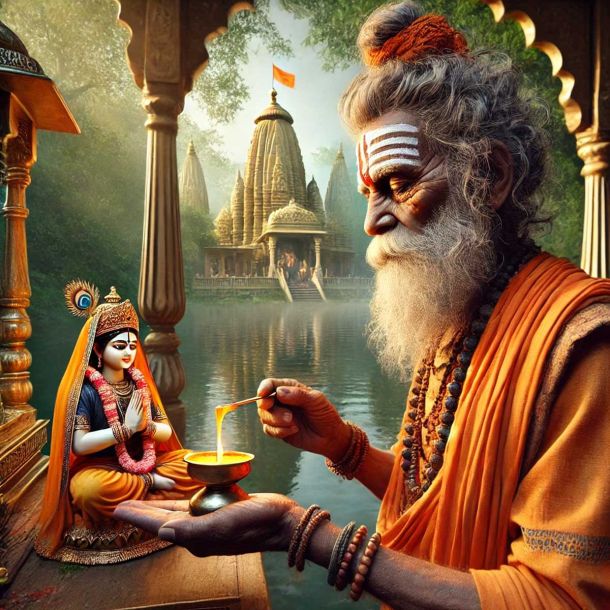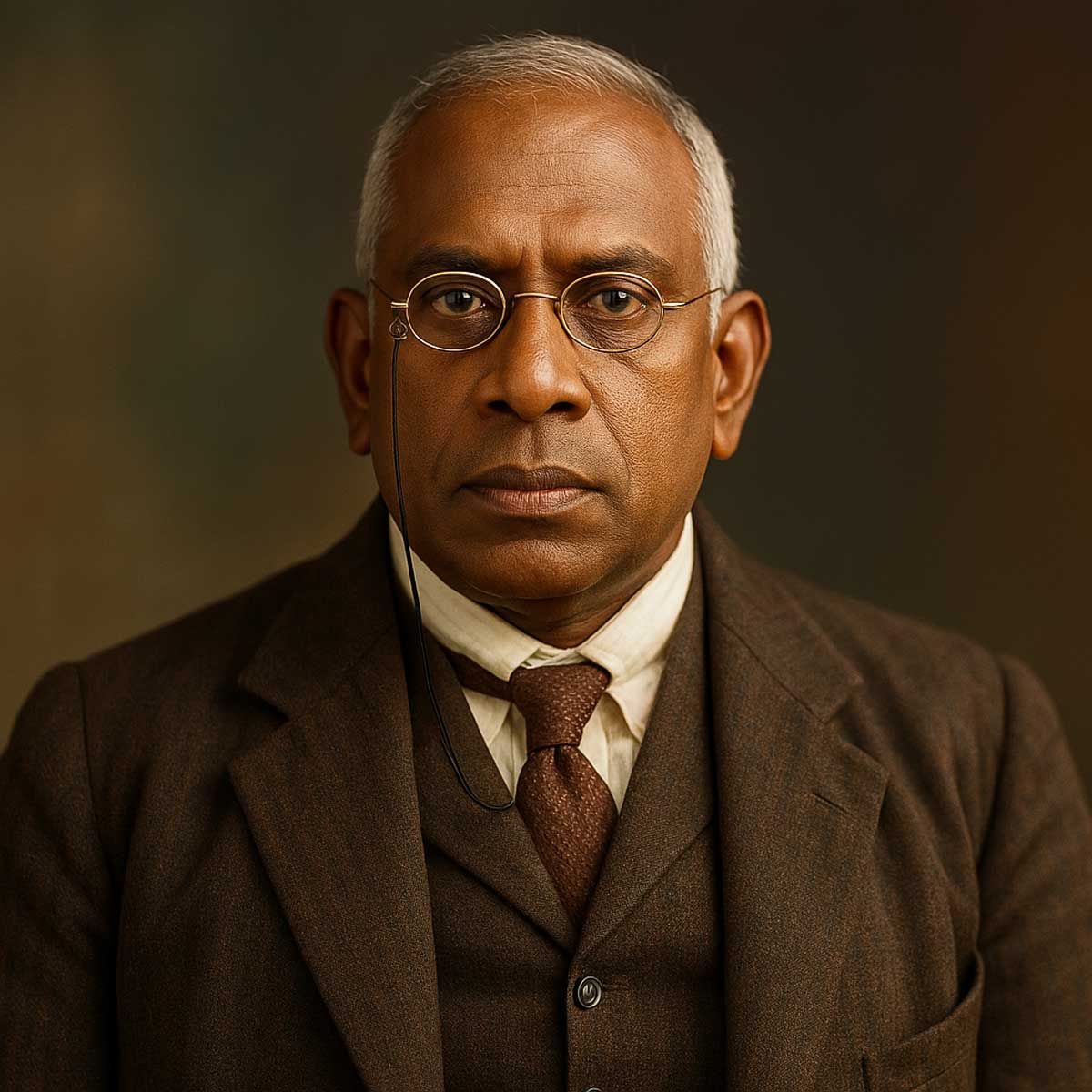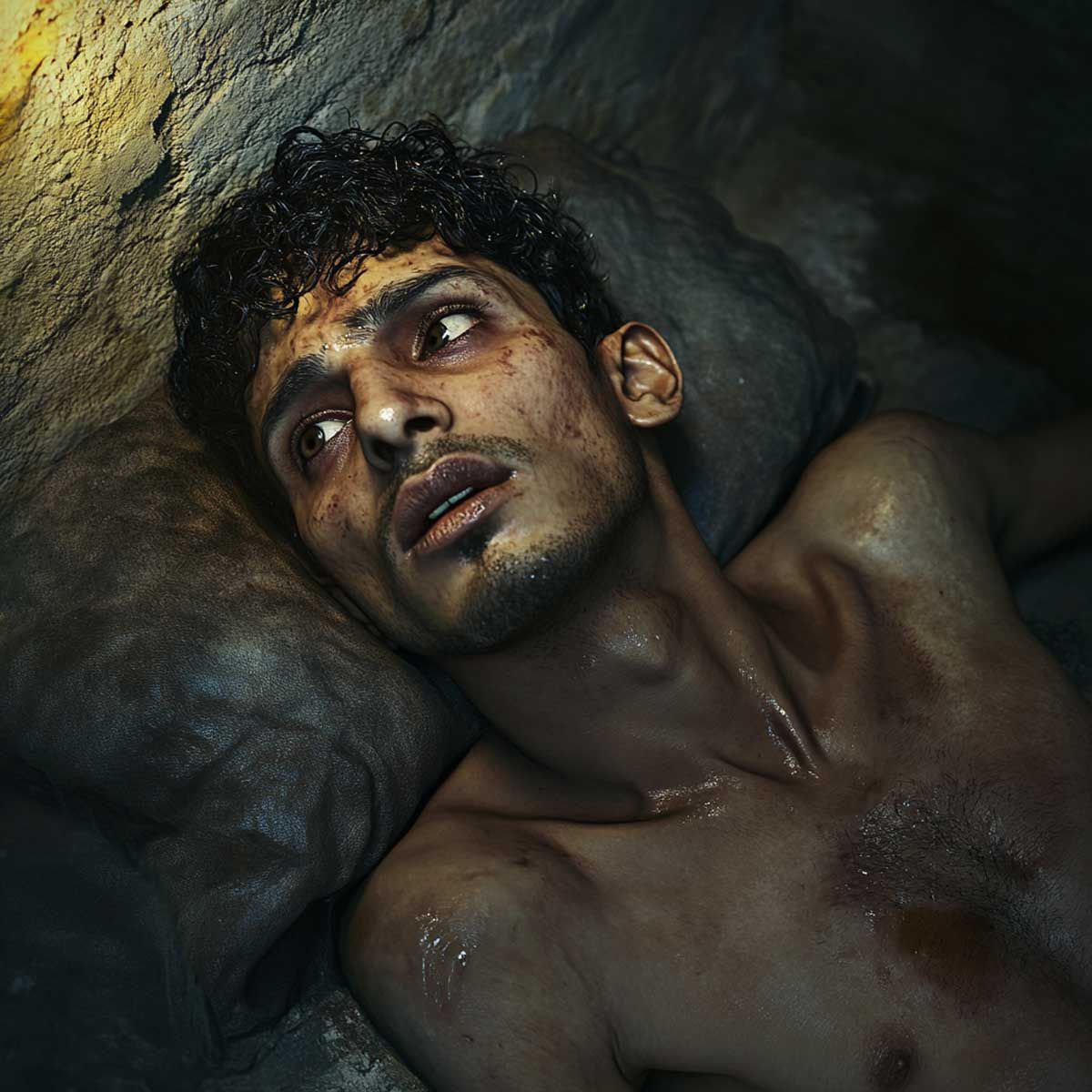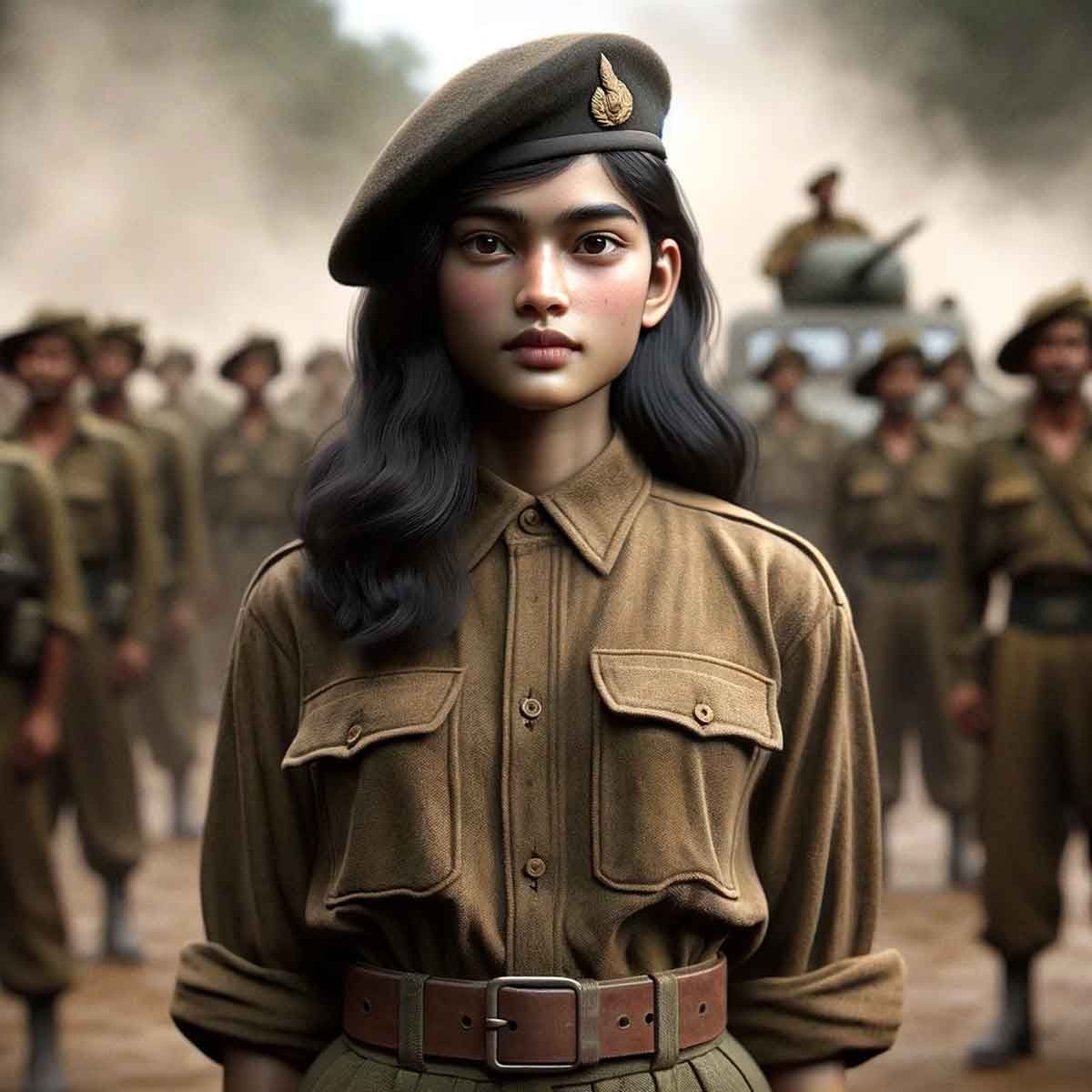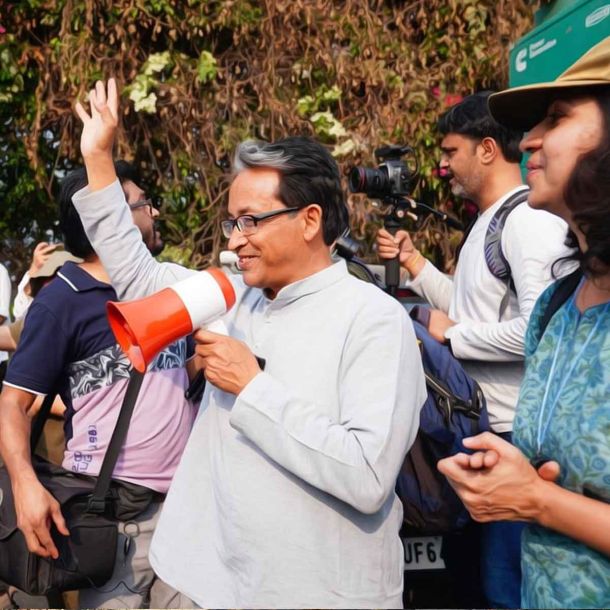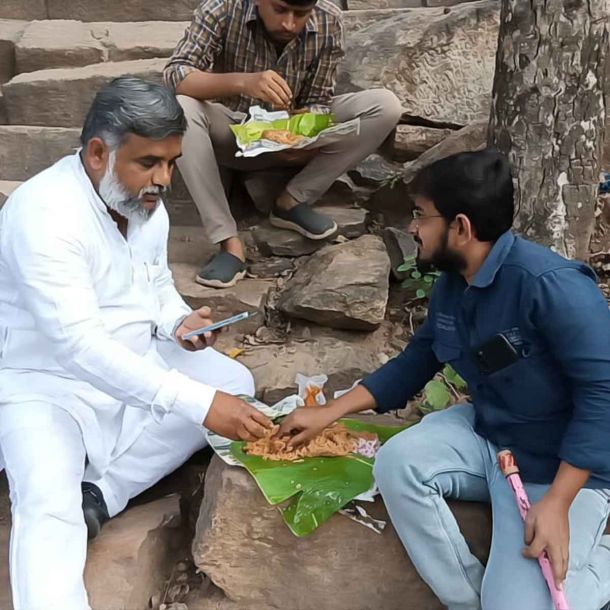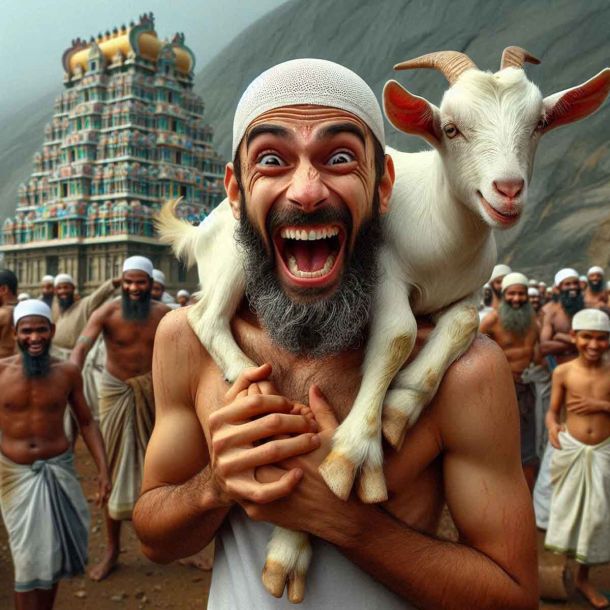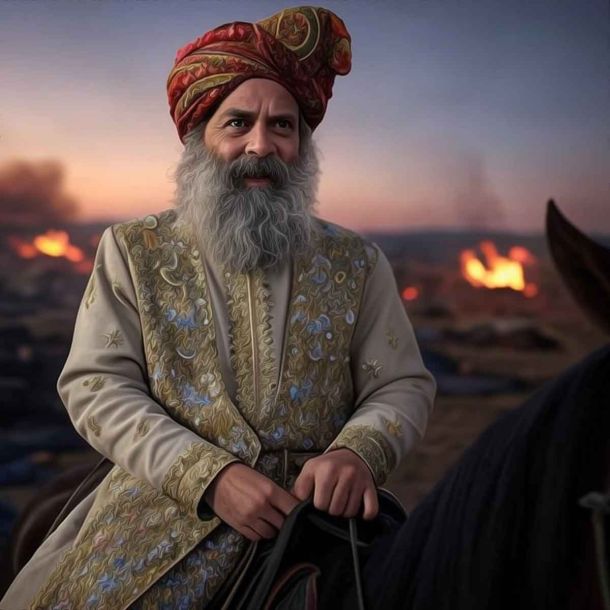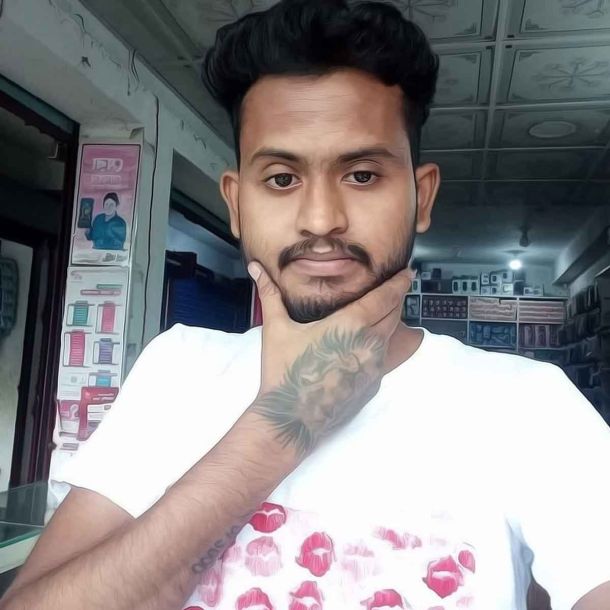More Coverage
Twitter Coverage
Satyaagrah
Written on
Satyaagrah
Written on
Satyaagrah
Written on
Satyaagrah
Written on
Satyaagrah
Written on
Join Satyaagrah Social Media
Chapekar Brothers who Avenged Pune's Dignity by slaying British Commissioner on June 22, 1897
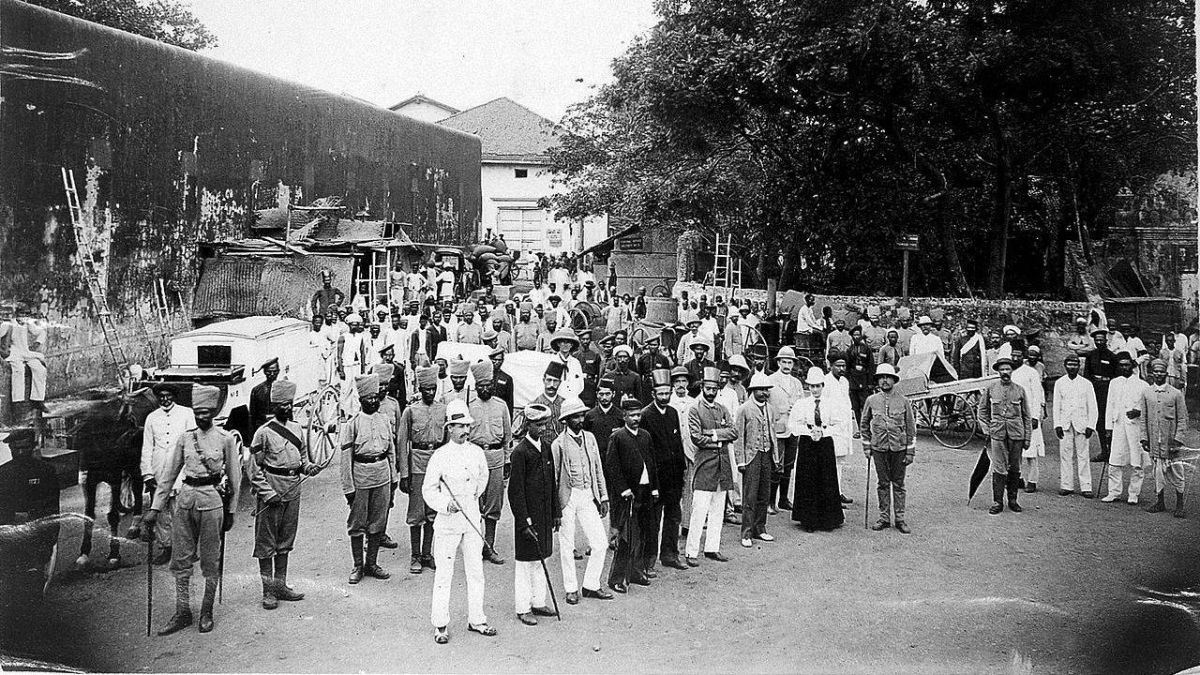
The road to India's independence was horribly a tough one; every stride you make is an adventure. It was not that India got her freedom without blood-shed and violence. Though Gandhiji chose non-violence and civil disobedience as a means to free the fetters on India, it did not yield the desired results as we all know. Then and there, in the early 18th and 19th century, violence against the British misrule did raise its ugly head whenever there were lapses in the administration.
India won freedom due to the blood and tears shed by hundreds of nameless revolutionaries and their families who braved British barbarity and faced death, deportation, imprisonment and forfeiture of property. Freedom was certainly not won by pleas, prayers and petitions. It was won substantially by violent and armed struggle by revolutionaries, a process that culminated in the Naval Uprising of 1946. The struggle for freedom was carried out not only in India, but also abroad, by people such as Shyamji Krishnavarma, Veer Savarkar, Madam Bhikaji Cama, Barrister Sardar Singh Rana, Virendranath Chattopadhyaya, Sardar Ajit Singh, Lala Hardayal, Rasbehari Bose, Raja Mahendra Pratap and Champakraman Pillay. In this illustrious list of fiery patriots, Chapekar Brothers stands out for their sheer courage and supreme sacrifice.
 |
Early life of Chapekar Brothers
The Chapekars are Chitpavan Brahmins coming from Konkan. The family came over to the Desh country and settled at Chinchawad near Poona where the three brothers, Damodar, Balkrishna and Wasudeo, were born about 1870, 1873 and 1879 respectively.
The brothers' grandfather, Vinayak Chapekar, was the head of an extended family which consisted of the brothers parents, Dwarka and Hari, and about twenty members including six uncles, two aunts, and two grandmothers. The family was wealthy at the time of Damodar's birth, earlier having had a turnover of lakhs of rupees.
With passage of time, mainly on account of Vinayak Chapekar's independent spirit and ways which made him incapable of submitting himself to government service, and his many unsuccessful business ventures, the family gradually sank into poverty.
The father Haripant followed the priestly profession repeating Kirtans or stories from scriptures and verse at different houses, in Poona and Bombay. The father and children became proficient in their art and were admired for their work.
The sons did not receive much formal education, they learnt reading and writing and began helping their father in his Kirtans as they grew. Their profession insisted on the performance of the daily Brahmanical rites, and in the general atmosphere of orthodoxy of Poona the brothers developed a strong conservative attitude, intolerant of the social reform movement.
 |
Formation of Secret Organisation
As the Chapekars grew, Poona became the storm-centre of several controversies over the Age of Consent Bill, the Sharadashram of Pandita Ramabai, a Christian convert, and the Hindu-Muslim riots. The Kesari and other local papers were championing the cause of orthodoxy, and in this atmosphere the Chapekars began to feel that a deliberate attempt was being made to humiliate Hindu religion by the reformers and Muslims, at the instigation of the British government. They felt they had to do something for their faith.
They organized an association called “Chapekar Club” for physical and military training which they also called as “the society for the removal of obstacles to the Hindu Religion”. Their activities took the form of attacking leading social reformers in the dark, putting tar on the Queen’s statue near the Esplanade in Bombay and burning the examination pandal. They became active members of the Ganapati melas the lustily sang songs praising Shivaji for “his daring deeds and exhorting the audience to risk their life on the battlefield in a national war to shed upon the earth the lifeblood of the enemies who destroyed Hindu religion”.
 |
The Pune Plague
As part of the global 3rd plague pandemic that affected many countries in 1896-97, Pune, Maharastra (then Bombay Presidency) was struck by Bubonic plague. It had initially affected the coastal cities with ports, but owing to its proximity to Mumbai, Pune too had been affected by it. By the beginning of January 1897, it had become nothing short of an epidemic. The epidemic was raging without any remedy in sight.
More than a century ago smallpox, plague, typhoid, etc., were dreaded diseases and the medical technology was not well developed to handle them well. Nor were there tested medicines to cure them.
By the end of February 1897, the epidemic was so bad and horrible, the mortality rate jumped far beyond the established norm. In 26 days of February 1897, there were 657 deaths (0.6% of the city's population). Nearly half of the population had run away from the city. Part of the city, now, became a ghost town.
It was then that the Colonial government had decided to put serious measures in place to curb the spread of the plague. It formed the Special Plague Committee and made Walter Charles Rand, an Indian Civil Services officer the commissioner of the committee in Pune by way of a government order dated 8 March 1897.
The purpose was to prevent the spread of the plague epidemic and to eradicate it for good with jurisdiction over Pune city, its suburbs and Pune cantonment. The Bombay Presidency under governor's direction assured the public that no Muslim and high caste Hindu women be examined and no quarters would be entered except by women. The serious measures were taken by the government for their own good. Orders included respect of caste and religious practices of the people.
A New York Times report on the plague in Pune, published in June 1897 quoted a Presbyterian missionary, who said,
“Two kinds of the disease, and both deadly—Natives dying by Hundreds of Hunger—Overseers stealing the supplies.”
Under command of a Major Paget of the Durham Light Infantry on 12 March 1897, 893 officers and men – both British and native – were ordered to go ahead with their plague duty to deal with an urgent situation, developing in the city.
Rand had initially provided some relief—establishing a hospital, quarantine camps, in addition to disinfecting affected areas. However, these initiatives soon paved the way for more brutal steps that would rip the dignity of the affected families, and ignite the fire of anger among the minds like the Chapekar brothers.
The commission appointed more than 800 officers and soldiers on duty in Pune rather than employing doctors for the job of implementing the measures. The measures included entry into houses forcefully, the examination of its occupants including women, taking them to segregation camps and preventing people affected with plague from leaving or entering Pune.
The drastic measures they followed while on duty included the following, in contrast to what the Governor's orders had mentioned:
- Forced entry into private houses
- Forced stripping and examination of occupants (including women) by British officers in public
- Forced evacuation to hospitals and segregation camps
- Removal and destruction of personal possessions. It is said Hindu idols included
- Restrictions and prevention of moving out of the city
- The occupants of the house or building were required by the Plague committee to immediately report to the government about deaths or illness suspected to have been caused by plague
- Funerals were declared unlawful, if not, properly registered
- The committee had an absolute right to mark special funeral grounds for funeral services to the corpses suspected to have died from plague. Absolutely, people should not use the unmarked funeral ghats in violation of government restrictions
- Violation of such emergency measures or disobedience will subject the offender to criminal prosecution
Soon after this humiliating and insulting search by the troops under Major Paget, the people of Pune were furious over the oppressive and humiliating measures taken by the British officials in contrary to the Governor's assurance. Chairman Rand remained unmoved, not responding to countless complaints received from various cross sections of the communities. This careless and discriminatory attitude of Rand and other Bobs towards Indian natives made the people more incensed because the officers were not sensitive to the objections raised by the people.
Gopal Krishna Gokhale, a social reformer who had formed a sectarian organization to work for the relief of the underprivileged stated that he had reliable reports which said that two women were raped by British soldiers in the pretext of controlling the disease. He claimed that the soldiers were ‘let loose on the town’. Rand denied that there were any cases of women being molested by soldiers.
The high-handedness of the British authorities in dealing with the epidemic led to a lot of frustrations and antigovernmental sentiments among the people.
The Kesari and other papers asked the people not to suffer quietly the oppression of Rand’s rule. The Chapekars could not remain immune to the propagandas. They wanted to terrorise the government officers.
In the meanwhile, after the plague duty by the troops was over, The Plague committee's deliberations completed on 19 May 1896. The report pointed out that the total people died from plague was around 2091. Rand on his report to the government expressed his satisfaction and wrote "It is a matter of great satisfaction to the members of the Plague Committee that no credible complaint that the modesty of a woman had been intentionally insulted was made either to themselves or to the officers under whom the troops worked". He also writes that closest watch was kept on the troops employed on plague duty and utmost consideration was shown for the customs and traditions of the people.
A missionary, Rev. Robert P. Wilder, quoted in a contemporary New York Times article, asserted that the cause of plague was native practices such as going bare-foot, the distrust of the natives about the government segregation camps; further, that houses have been shut up with corpses inside, and search parties have been going around to unearth them. The same article included reported rumours that the plague has been caused by grain hoarded for twenty years by the banias or grocers being sold in the market, while others felt it was Queen Victoria's curse for the daubing of her statue with tar.
The British India's distorted version of its plague report and their continued denial angered one section of freedom fighters who were disappointed about their being dishonest and lethargic in this serious matter.
In contrast to the above British accounts, accounts based on local Indian sources quote, among others, Narasimha Chintaman Kelkar as stating that the appointment of military officers introduced an element of severity and coercion in the house searches, the highhandedness of the government provoked the people of Puna, and some soldiers were beaten in Rasta Peth locality. British soldiers either, through ignorance or impudence, would mock, indulge in monkey tricks, talk foolishly, intimidate, touch innocent people, shove them, enter any place without justification, pocket valuable items, etc.."
Bal Gangadhar Tilak wrote, “Her Majesty the Queen, the Secretary of State and his Council, should not have issued the orders for practicing tyranny upon the people of India without any special advantage to be gained.”
Gokhale alleged, while on a visit to Britain, that British soldiers "let loose on the town" of Pune were ignorant of Indians' language, customs, and sentiments. Moreover, he claimed – in marked contradiction to Rand's above-quoted statement – to be in possession of reliable reports regarding the rape of two women, one of whom committed suicide rather than live with shame.
The three brothers were heavily inspired by conservative ideologies and a sense of rebellion against the British. Regular harassments like these had prompted the Chapekar brothers and other members of the revolutionary “Chapekar Club” to take action against the person who started it all—the commissioner. Inspired by the strong language that Balgangadhar Tilak used in his newspaper “Kesari” they decided to take action and bring down Rand who had ashamed hundreds of families in Pune.
 |
Killing of Officer Rand
On 22nd June 1897, the British monarch Queen Victoria’s diamond jubilee celebrations were being held at Pune. A program was organized even in Pune on this occasion at the ‘Raj-bhavan’ (the building now called the Main Building of Savitribai Phule Pune University) in ‘Ganesh Khind’. This building had been commissioned as the Governor’s residence by the Governor Sir, who is responsible for a lot of the Victorian neo-Gothic architecture of Pune and Mumbai. The Residency for Pune was on the banks of the Sangam (near the College of Engineering Pune), and the road from there to Government House (Ganeshkhind Road) was a tree-lined avenue, now seen only on old postcards.
In his autobiography Damodar writes:
There was plague in the Bombay Presidency, earthquakes on the Calcutta side and a terrible famine all over India. How (un) generous it was (for the Queen of England) to cause the rayats, already beset with three such formidable calamities, to celebrate the sixtieth year of her reign at such a critical juncture instead of relieving them from those calamities. This behoves only the Queen of England. According to our Shastras, a king and his subjects are in the same relationship as a father and son. On this principle, the Queen is the mother of her subjects. But judging from her actions there is no reason why, instead of being styled a subject-protecting mother, she should not be called a female fiend who devours her own progeny. Had the Queen a generous heart, she would have on the said joyful occasion earned the blessings of her subjects by feeding them. But as we saw nothing of that sort, we did not like the festival at all.
We do not at all like to make a false display of loyalty by means of hypocritical newspaper articles or speeches. India is, at this moment, full of such imbeciles. Though these good-for-nothing people do not at all like the policy of the British Government, they make a great show of their loyalty in their newspapers and speeches. Some shower upon the Queen covert ridicule in a variety of ways, but when charged under section 124 defend their writings by asserting that they did not mean what is alleged of them. Thinking that it was a thousand times better to openly spurn the English people, their authority and their Queen, and to bring them into disgrace, we exerted ourselves in that direction.
We however, do not consider ourselves to be her loyal subjects, and therefore, with a view to mar the rejoicings, instead of joining in them we resolved to set up an image of the Queen of England at some conspicuous and central spot in the Budhawar street on the morning of the Jubilee day. We laboriously searched many rubbish heaps and procured with great difficulty some extremely old and tattered shoes. We could get only six of them and no more. We set up these shoes on the main Budhawar road, with a picture of the Queen stuck to the sole of each of them. With regard to this, our educated brethren would taunt us by saying that we did this stealthily and not openly, yes, friends, yes ; though we did it stealthily at that time, we knew full well that: some day we would have to come forward and that we would do so with great pride. That blessed day has now fortunately dawned upon me, for which I thank Gajanan. Having done this in the morning we prepared ourselves to go to the Ganesh Khind as soon as it was dusk. At the time of our departure we relinquished all hopes of our home, wives, children, parents, friends and relatives. When leaving our house, we devoutly made obeisance to Shri Mangalmurti, and muttering his name made a mental obeisance to our parents and bid adieu in our minds to all, young and old, nay, we even touched our extremely favourite she-buffalo and took leave of them all. Similarly, with the words " Dear brethren. May the merits of you all help us in the attainment of success." we left the house. We even took with us our sacred scripture, the Gita.
The brothers expected all government officers to arrive for the function. Carrying weapons with them, Damodar, the eldest and Balkrishna, waited for Rand’s carriage to pass by a selected spot on Ganeshkhind Road (now the Senapati Bapat Road in Pune).
It was around midnight on 22nd June 1897 when celebrations for Queen Victoria’s Diamond Jubilee ended. Walter Charles Rand was riding in his horse carriage. He was followed by Lieutenant Ayerst, his military escort, who was riding in his own horse carriage. Both British officers were merrily returning from the celebrations, to go rest in their quarters. Both were unaware that they were galloping towards their death.
Damodar, Balkrishna and Vasudev were waiting patiently in pitch darkness on the road each with a gun and sword in their hands and revenge on their mind.
Just as a carriage passed by the eldest brother, Damodar, he followed it and as it reached the yellow bungalow, shouted the decided call of “Gondya ala re ala”.
It was a signal for Balkrishna to finish off Rand, the infamous British officer who had created much distress among the masses with his tactless handling of the Pune plague. Fired with revolutionary zeal, Balkrishna boarded the covered carriage and shot the occupant dead. Suddenly he found that it was Lt Ayerst, an associate of Rand. Even then, the call was going on. Balkrishna understood the mistaken but remained unshaken.
Damodar immediately swung into action and although he thought that he was deprived of the opportunity by Balkrishna, now was his chance to take action. Vasudev, the youngest brother, was still running behind Rand’s coach. He stopped Vasudev and jumped into the coach, drew aside the curtains and emptied his revolver into intended target's head from the back. Damodar got off the horse-carriage very happy for having accomplished his mission.
None of the incidents was noticed by either of the coachmen. The road was deserted and the young men who shot Lt Ayerst and Rand disappeared in the dark.
Ayerst died on the spot while Rand was admitted to a hospital where he died on 3rd July.
 |
Ultimate sacrifice of Chapekar Brothers
The killings shook the British empire and soon special officers were appointed to investigate into the murder. The reward of Rs 20,000 rupees was announced by British Government for the person giving information on the whereabouts of the assassins, who had added a colourful chapter to the history of the freedom movement of India.
The police resorted to ruthless repression in order to strike terror in the hearts of the people. The Anglo-Indian press, and particularly The Times of India, wrote insinuating articles alleging that Lokmanya Tilak’s speeches had incited the killers to kill Mr. Rand and that the Poona Brahmins had conspired to overthrow the British government.
In the meantime, Damodar Chapekar had been arrested for Rand’s murder in Bombay. Damodar took the entire responsibility of the murder upon himself.
Damodar Hari was arrested on the basis of information given by the Dravid brothers whereas Balkrishna and Vasudev had absconded. The Dravid brothers, who at one time were members of the Chapekar Club, became informers of the police and ratted out on Chapekar brothers. In his statement, recorded on 8 October 1897, Damodar, said that atrocities like the pollution of sacred places and the breaking of idols were committed by European soldiers at the time of house searches in Pune, during the plague. Chapekar tells that they wanted to take revenge of this.
People were amazed when they came to know of his fearless statement in the court. On 2nd March 1898, in the Sessions Court, his statement was treated as a confession and he was charged under section 302 of the Indian Penal Code, tried and hanged, on 18 April 1898.
While Damodar Chapekar was kept in the Yervada prison in the ward for prisoners to be hanged, Tilak was kept in another ward of the same prison. Damodar Chapekar requested the authorities at the prison to be allowed to meet Tilak once at least. The permission was granted. When Damodar met Tilak, he asked him for a copy of the Bhagawad Gita and requested that after his death the last rites should be performed according to the Hindu religion.
Tilak gave a copy of the Bhagawad Gita to Damodar and the latter went to the gallows, quietly holding the religious book in his hands. Tilak arranged for the funeral and the last rites to be performed according to the deceased’s wishes.
Balkrishna was found only in January 1899, betrayed by a friend.
On the 25th June 1897 the Government of Bombay had issued a proclamation offering a reward of Rs. 20,000 for information leading to the detection of the perpetrators and instigators of the murder of Lieut. C. R. Ayerst and Mr. W. C. Rand. Of the two Chapekar brothers Damodar had been captured but Balkrishna was at large. Balkrishna was later caught in the Hyderabad State by the special efforts of Mr. Stephenson, Detective Officer, Hyderabad State, assisted by the police of the State. The Nizam's Minister applied to the Government of Bombay to give the Hyderabad State half the amount of the Reward i.e. Rs. 10,000 for distribution to persons who were responsible for effecting the arrest of Balkrishna Chapekar.
Police informants: the Dravid brothers, were eliminated by Vasudeo Hari, Mahadev Vinayak Ranade and Khando Vishnu Sathe, who were arrested in their attempt to shoot police chief constable Rama Pandu later the same evening, of 9 February 1899.
On 10th February 1899, WD Sheppard (ICS, DM - Poona) wrote to Sir C Ollivant (Member of Council, Bombay) the following letter (Refer: Maharashtra Gazette):
 |
All were subsequently apprehended and tried. There the Chapekar brothers Balkrishna Hari, Vasudeo Hari, and Ranade were sentenced to death and executed by the gallows, Vasudev Hari: 8 May 1899, Mahadeva Vinayak Ranade: 10 May 1899, Balkrishna Hari: 12 May 1899. Sathe, though a juvenile, was sentenced to 10 years' Rigorous Imprisonment.
Bombay Gazette published Press Report of Vasudev hanging:
 |
All the three brothers felt they were dying for a lofty cause and showed no signs of fear or remorse when mounting the gallows. They were all married but left no issues.
The supreme sacrifice made by the three brothers was unique and evoked respect in the hearts of the people. Tilak arranged for the last rites of the three brothers and their associate Ranade, who had laid down their lives for the honour of their motherland.
Times of India detailed report of the Damodar death
Times of India dated 19th April 1898 gave a detailed report of the death by hanging of Damodar Hari Chapekar on the morning of 18th April 1898. The following extracts summarise the report :—
2. "When death warrant was being read Chapekar refused to hear it and began to repeat " Narayan, Narayan, Jai Govind Hari and Narayan, Narayan, Jai Gopal Hari." When asked if he had anything to say, he did not reply and kept on repeating the same Mantra."
3. "Although he was singing, every now and then his voice faltered, his lips twitched and he needed support from the man behind him. His eyes were glaring wildly and had a strange light in them. Then he was led forward. In his hand he held a sacred book, and this he carried with him to the last".
4. "Arrived at the foot of the scaffold he mounted without, assistance apparently but he was led by two native warders and had a third behind him. At the last step he swayed back a little but recovered himself. His legs were fastened, the cap was drawn over his face, he all the while chanting his weird-sounding death song. When the rope was placed over his head and the hangman pulled it into its place, the song stopped and the criminal almost fell backwards. But it was only momentarily, for the hangman stepped back, the lever creaked, and the unhappy murderer, whose crime had gained for him such world wide notoriety, fell into the pit beneath, a drop of 7 ft. 6 inch. There was a voilent convulsion, his chest heaved, and then there was stillness.
 |
The lion of Punjab, Lala Lajpat Rai on Chapekar brothers
People did not view Rand’s murder by the Chapekar brothers as a crime. Freedom fighters Damodar Hari Chapekar and his brothers Balkrishna and Vasudeo drew praise from none other than Lala Lajpat Rai. Lala Lajpat Rai, the lion of Punjab, wrote:
“The Chapekar brothers, who murdered the two officers who had made themselves obnoxious during the plague epidemic in Poona, were not looked upon by the people as criminals. The Chapekar brothers met their fate heroically. People admired the motive behind the deed though not the deed itself. Chapekar brothers were in fact the founders of the revolutionary movement in India.”
Coverage of the incident by international press
An article, published in The New York Times, dated 4 October 1897, reports the arrest of Damodar Chapekar Deccani, and 28 others, Ayerst's and Rand's slayers. This article states that Deccani is Damodar's last name and refers to him as such. It also terms him an advocate.
Another dated 4 November 1897, reports the incident and the subsequent trial, it calls Damodar Chapekar a Brahmin lawyer. The former article says that Damodar became embittered with Europeans as he was refused enlistment in the army, by the authorities in Shimla. Both articles also mention Damodar's admission of an earlier incident of tarring of Queen Victoria's statue.
 |
On 2 February 1898, The New York Times reported the death sentence passed on Damodar.
The Sydney Morning Herald, dated 13 February 1899, reports that a brother of Damodar Hari, who was sentenced to death for the shooting to death of Poona Plague Commissioner and Lt. Ayerst, fired upon a native police officer. A connection between the shooting of the Dravid brothers on the streets of Poona is also mentioned with the shooting. It further states that Chapekar boasted of murder the Dravids and also named an accomplice, Ranade. It also reports the arrest of Chapekar and Ranade.
In popular culture
The 1979 Indian Marathi-language film, 22 June 1897, covers events prior to the assassination, the act and its aftermath.
The Hindi film Chapekar Brothers (film) was released in 2016 covering the same historical events.
An Indian web television series about the brothers in Marathi, Gondya Ala Re, was released in 2019 on Zee5.
 |
Are you ready to place your lives in the hands of Bharatmata
Freedom fighters like Bhagat Singh, Savarkar hated the British and they stood against the British with all their might. They made every sacrifice including the highest one of their life. The names and faces are innumerable! How was this possible ? What was the drive behind their selfless acts?
Today the situation is quite different. At that time we had a powerful family system which was dynamic and vibrant. Because of this we could have patriots in our country. During the British time the education was partisan. From the school curriculum, Hindu Dharma, our culture, our Gods and Goddesses were detracted. But we in our homes were stoically faithful to our Gods. Besides, fortunately there were many religious books available outside schools. The people subscribed to the British viewpoint only to pass the exams. But everyone knew in their hearts that this was untrue. Such was the powerful current of thought prevailing in the minds and hearts of our people and every household that no effect of vicious education of British was felt. In short, it is because of our family system and values that previous generations were properly guided. But unfortunately today our family system is being destroyed. Due to this, the Hindu today is becoming fearful, ignorant and lost in the whirlpools of the world.
The revolutionary Chapeker Brothers whose exploits inspired Savarkar to fight against the British hated most of the so called reformists and religious converts. They were of the impression that ‘these so called reformists and religious baiters would one day destroy our Nation and turn infidels and traitors to their own country !’
– Gurudev Dr Kateswamiji
One cannot forget the sacrifices of the martyrs !
For killing Rand and Lt. Ayerst, the Chapekar and Mahadev Ranade were hanged to death. The story how these brave men sacrificed themselves on the altar of freedom struggle is inspiring.
Today one may feel that all the attempts of Chapekar and Ranade were juvenile and the killing of Rand and Ayerst were unnecessary ! But one must remember all this work was for their love of their country. The Chapekar brothers did not stand to make any money nor collect laurels for this act. They shed their blood for their brethren. There was no personal benefit to them or their family. Are we ready to go to such extremes for the sake of our nation ? Have we done anything as yet for our country ?
Answer these questions before venturing to criticise the valiant brothers and the freedom fighters. The critique of such valiant acts is like a coward calling for peace when faced with mortal peril ! Those doing this would also be consigned to hell ! Remember well, the sacrifice of Chapeker Brothers and that of Ranade will never be forgotten by our countrymen. It is eternally etched on the mind of the Indian!
Dr Sachidananda Shevde, Mukt Ved
References:
navrangindia
TheBetterIndia - (Edited by Gayatri Mishra)
hindujagruti
Bharatpedia
"Chapekar Brothers Case - Rise of the Revolutionaries (UPSC Modern History)". BYJUS
Chapekar, Damodar. Autobiography of Damodar Hari Chapekar (PDF). From Bombay Police Abstracts of 1910. pp. 50–107
"Ayerst's and Rand's slayers: Damodar Chapekar Deccani, a Brahmin Advocate and 28 Others Arrested in India". The New York Times (published 5 October 1897). 4 October 1897
"Damodar Chapekar on trial" (PDF). The New York Times (published 4 November 1987). 3 November 1897
"'Gondya Ala Re'- a war cry that inspired Inquilab Zindabad!". Zee News. 20 August 2019
22 June 1897 on IMDb
"THE REVOLUTIONARIES: CHAPEKAR BROTHERS"(PDF). [Maharashtra Government Publication]
Joglekar, Jayawant D. (2006). Veer Savarkar Father of Hindu Nationalism. Lulu.com. p. 27. ISBN 1-84728-380-2
 Support Us
Support Us
Satyagraha was born from the heart of our land, with an undying aim to unveil the true essence of Bharat. It seeks to illuminate the hidden tales of our valiant freedom fighters and the rich chronicles that haven't yet sung their complete melody in the mainstream.
While platforms like NDTV and 'The Wire' effortlessly garner funds under the banner of safeguarding democracy, we at Satyagraha walk a different path. Our strength and resonance come from you. In this journey to weave a stronger Bharat, every little contribution amplifies our voice. Let's come together, contribute as you can, and champion the true spirit of our nation.
 |  |  |
| ICICI Bank of Satyaagrah | Razorpay Bank of Satyaagrah | PayPal Bank of Satyaagrah - For International Payments |
If all above doesn't work, then try the LINK below:
Please share the article on other platforms
DISCLAIMER: The author is solely responsible for the views expressed in this article. The author carries the responsibility for citing and/or licensing of images utilized within the text. The website also frequently uses non-commercial images for representational purposes only in line with the article. We are not responsible for the authenticity of such images. If some images have a copyright issue, we request the person/entity to contact us at satyaagrahindia@gmail.com and we will take the necessary actions to resolve the issue.

